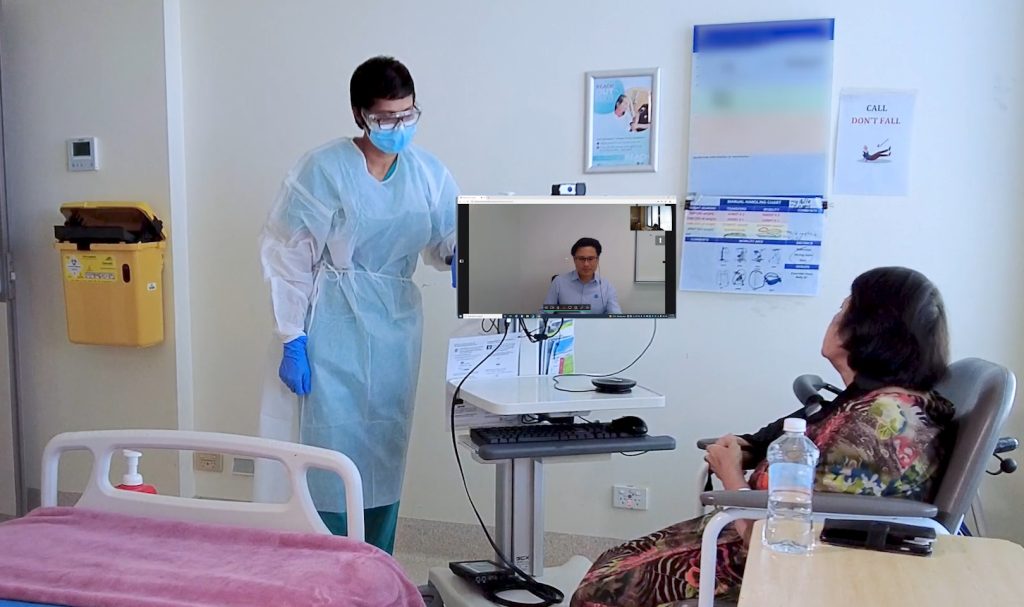
We are witnessing some historic developments now that will have long-lasting impacts into the future. Our traditional healthcare services are no longer enough, we need innovative solutions that result in better patient care. Furthermore, the pandemic has opened our eyes to the breakthroughs that are being made in telemedicine and remote care.
What is telehealth?
Telehealth refers to the use of digital information and communication technology, such as computers and mobile devices, to access and manage health care services remotely. These could be technologies that you use at home or that your doctor employs to improve or supplement healthcare services.
What is remote care?
Remote Medical Care is a telemedicine service that enables continuous monitoring of a patient’s status as well as preventive and control examinations outside of medical facilities. The use of mobile devices that measure vital signs enables this type of care.
What are the practical applications of using technologies like rugged tablets and medical tablets in telehealth and remote care?
Real-time Communication
Patients now have the capacity and means to speak with their doctors via remote technologies and receive care anytime and anywhere as long as they have access to a cellphone or Wifi connection. Doctors can use technology to help them give better care to their patients. A virtual consultation, for example, allows primary care practitioners to seek expert advice on a patient’s diagnosis or treatment when they have questions. Exam notes, history, test results, X-rays, and other images can be sent to the specialist for evaluation by the primary care physician. The specialist may answer online, schedule a virtual appointment with you at your doctor’s office, or meet with you in person. These virtual consultations may prevent unnecessary in-person referrals to a specialist, reduce wait times for specialist input, and eliminate unnecessary travel.
Patient Data Collection and Personal Health Apps
Medical tablets can be combined with software or an app that patients can access from any web-enabled device at any time. A personal health record can be rapidly retrieved from their medical tablets in the event of an emergency, providing emergency responders with essential information such as current diagnoses, medications, drug allergies, and your doctor’s contact information.
Patients can now use medical tablets to access an online patient portal while in the waiting room waiting to see their doctor. These portals provide an alternative to email, which is an unsecured method of transmitting private medical information. A portal is a more secure online tool for storing personal health information, keeping track of vital signs, and setting up medication reminders.
Remote Patient Monitoring
Remote patient monitoring is a telemedicine method that involves remotely monitoring a patient’s vital statistics. Telemonitoring uses a variety of electronic devices to transmit patient data to an analytical interface used by a healthcare clinician. Doctors and health care teams can monitor their patients’ health remotely using a number of technologies, including web-based or mobile apps for uploading information such as blood glucose levels into equipment that measures and wirelessly communicate data.
Telemedicine and remote care were already gaining popularity before the Covid-19 pandemic. However, the pandemic has certainly propelled them into the mainstream of healthcare by accelerating the adoption of telemedicine and remote care as a viable way of delivering care. Although the pandemic will eventually recede, the demand for virtual care is here to stay.
Medical tablets make it easier for medical teams to implement telemedicine into their practice.
Medical tablets improve telemedicine and remote care because of the following features:
- Built-in front and back cameras
- Antimicrobial enclosure
- Integrated smart card/CAC reader
- Optional barcode and RFID scanners
Medical tablets are one of the technological advances that are aiding healthcare teams globally as they find new ways of improving their patient care and healthcare staff’s efficiency on shift.

